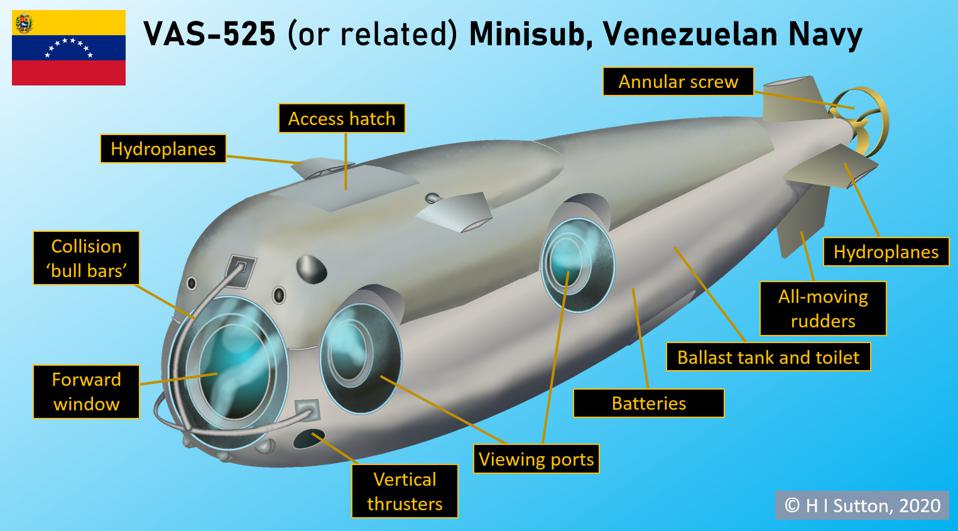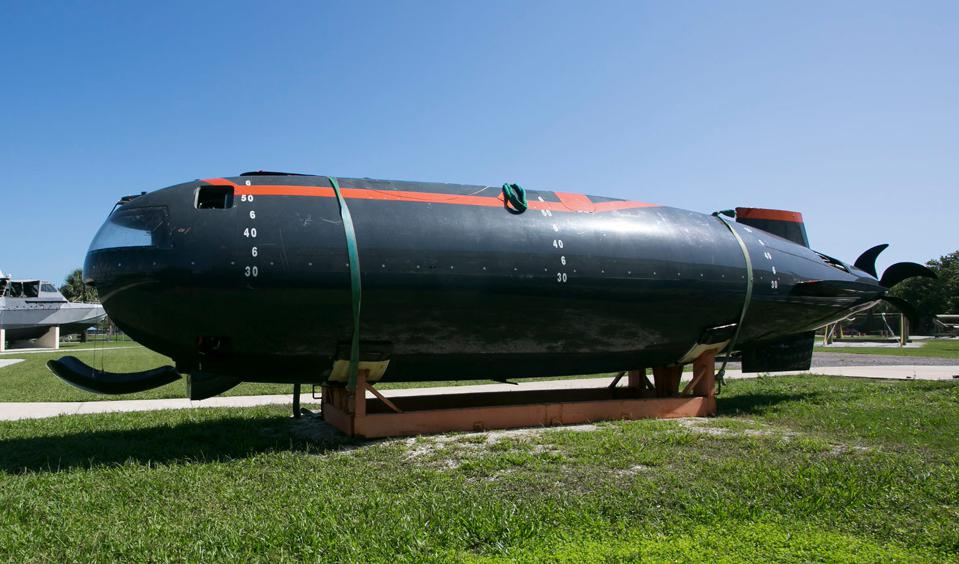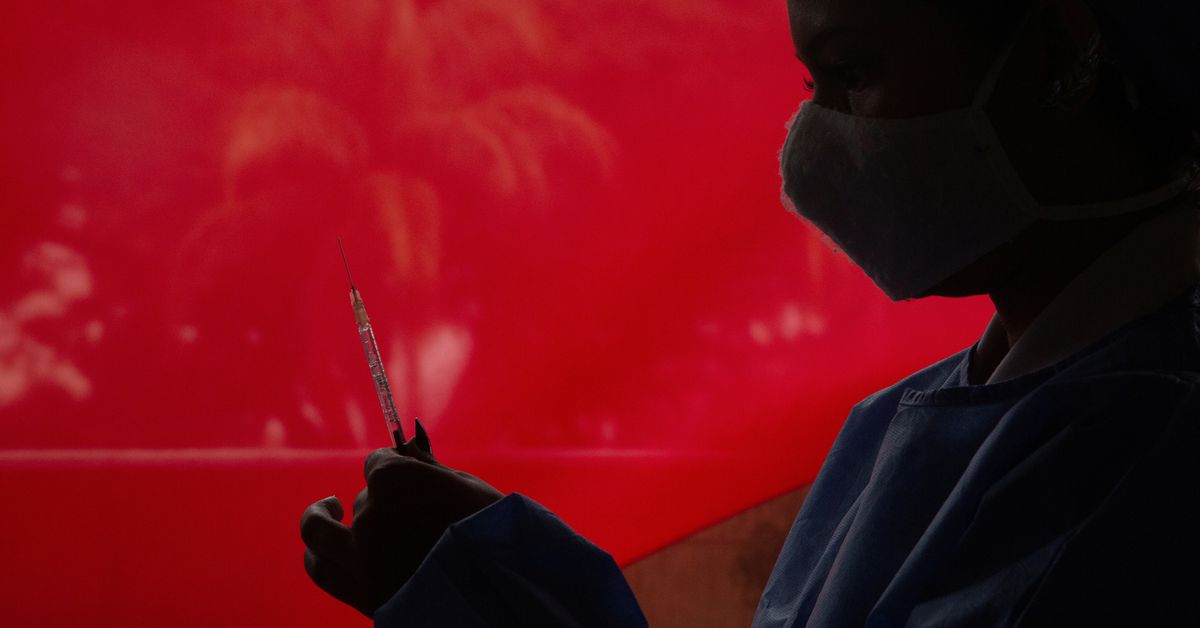Venezuela’s Navy has a diver transport submarine which is virtually unknown even in defense circles. The minisub is closely related to one recently tested by the U.S. Navy SEALs. Open source intelligence (OSINT) that I have seen strongly points to its presence in Puerto Cabello, Venezuela. This is a sophisticated design with both civilian and military applications.

H I Sutton
The minisub appears to be a VAS 525 model designed by GSE Trieste in Italy. Evidence of the vessel was unearthed by an OSINT researcher ‘sahureka’ who has a track record of unearthing fresh information on Latin American navies.
The VAS 525 SL Mk2 version, which this is very similar to, is 23.9 feet long and about 6.9 feet across. Under the teardrop shaped composite outer shell is a strong steel pressure hull. Inside this it can transport a pilot and 4 passengers or around 1,000 lb of payload. The largest VAS-525 variant can hold as many as 12 people, although this one is smaller. They can dive to depths of up to 525 feet (hence the name), which is deeper than many similar craft. Maximum speed is 6 knots (~7 mph).
Some versions of the VAS 525 cannot operate divers because the cabin has to remain sealed at all times underwater. But other models, like this one appears to be, can. It will have a second lock-out chamber inside for up to three divers. This capability allows it, potentially, to be used as special forces transport. Or they could deliver divers to the site of underwater infrastructure such as internet cables.
The VAS 525 was designed by the same engineers as the Button 5.60 used USSOCOM (U.S. Special Operations Command). This was an experimental Dry Combat Submersible (DCS) for the U.S. Navy SEALs. The submersible, designated UOES-3 (User Operational Evaluation System-3) in U.S. service, was designed to conduct covert missions from a host submarine. It was much better optimized for the SEAL mission than the VAS-525 and was equipped with a range of ‘leading navy only’ technologies.

The National Navy SEAL Museum in Fort Pierce, Florida.
As it turned out the Navy did not put this Button into service and instead adopted the larger British designed S351 DCS. But the trials Button 5.60 vehicle is now on display at the National Navy UDT-SEAL Museum in Florida. It gives us an idea of the design pedigree behind the Venezuelan sub.
The Venezuelan vessel appears to have been under construction at UCOCAR (Naval Coordinator Unit of Navy Dry-dock Services) military shipyard in Puerto Cabello, Venezuela. Evidence suggests that it has been there since around 2015, but may now be in a finished state.
It is unclear how UCOCAR obtained the plans to build the Italian submarine. One theory is that one was acquired by Corpoelec, the fully integrated state power corporation. This may have been before international sanctions against the regime came into effect. The president of Corpoelec was at a time Luis Motta Domínguez who was also a General in the Army. Corpoelec had a VAS-525 SL Mk2.
Alternatively they may have acquired only the detailed plans. Or possibly a civilian copy on the second hand market. Whatever the route, Venezuela has at least one and may be able to put it into local production.
The Venezuelan Navy (Armada Bolivariana de Venezuela) is normally listed as operating just two submarines. These German supplied Type-209 boats can carry the relatively modern Atlas Electronik SST-4 Seal wire-guided torpedo. But there is serious doubt that either of them is currently seaworthy. The minisub may therefore be the Venezuelan Navy’s only submarine.
Source: Forbes




